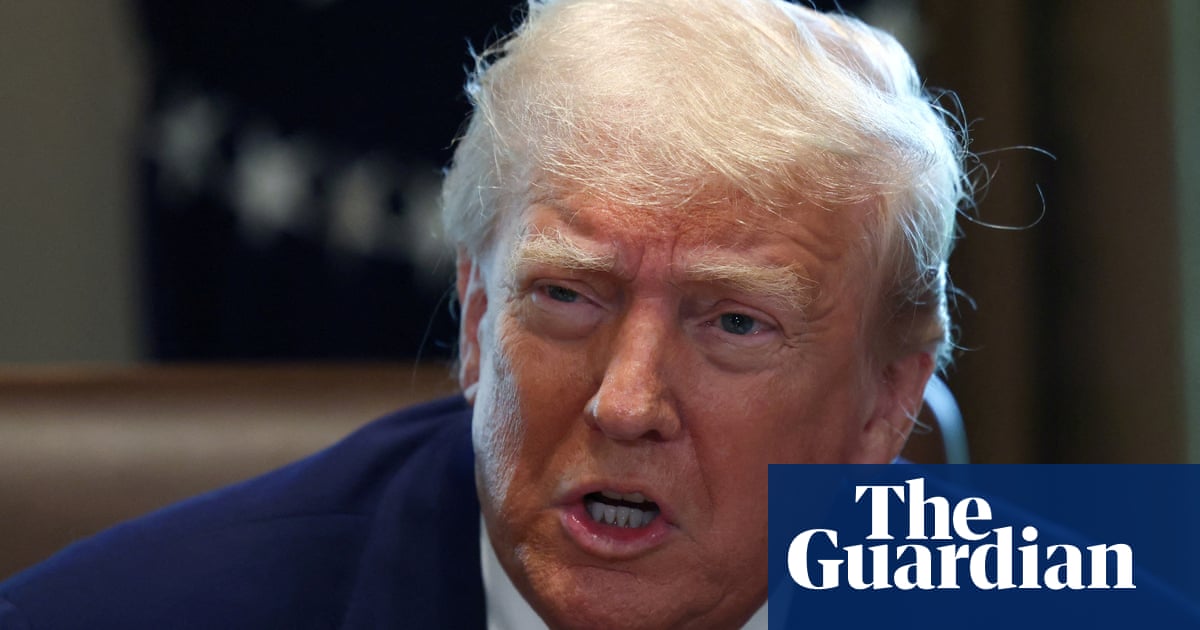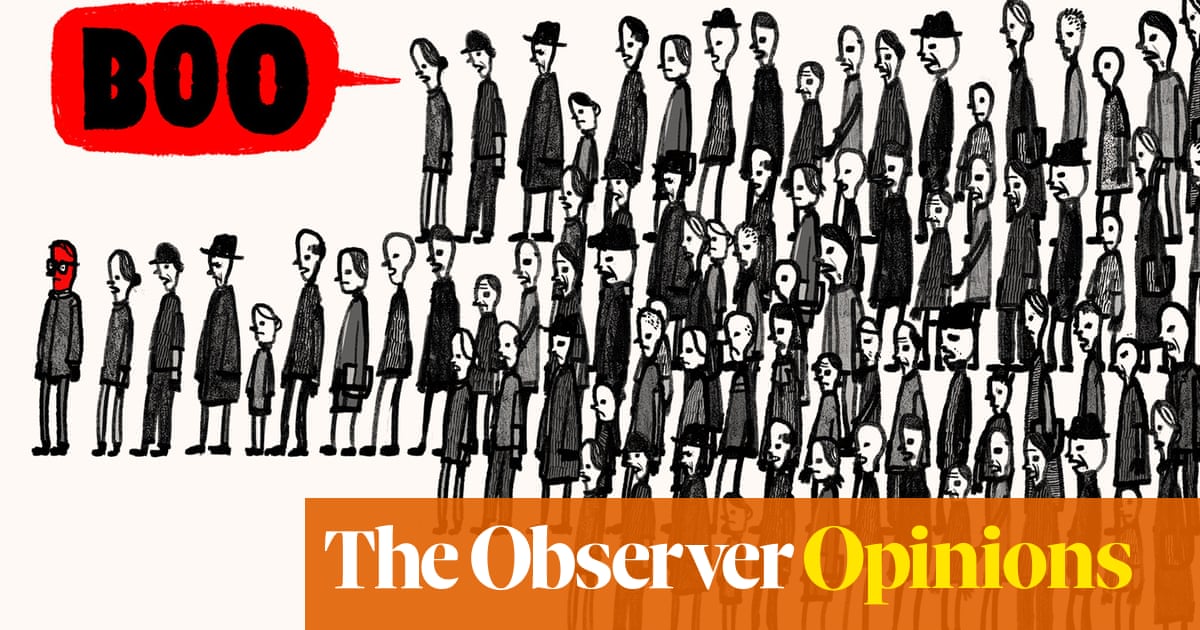A barrage of executive orders, many concerning immigration, marked Trump’s first weeks in office. Maligning people immigrating as a “large scale invasion” of “potential terrorists”, “violent”, and “hostile actors with malicious intent” the EOs call for the slashing of physical and legal pathways to admission, lay the groundwork for mass deportation and attack immigrant rights by attempting to (unconstitutionally) revoke birthright citizenship.
People like Kristi Noem, the secretary of homeland security, are using social media strategically to stoke fear, broadcasting images of Ice raids and deportations to the notorious Guantánamo Bay in Cuba. The administration has also sent an additional 1,500 active duty troops to “secure” the southern border.
Within the spectacle and bombast is a glaring message: Black and brown people are unwelcome in a great white America.
The point is hard to miss in pre-election rhetoric that cast Haitians as dog-eaters; in executive orders that cancel refugee resettlement, but carve out an exception for Afrikaners “escaping” the “race-based discrimination” of a policy that reclaims land stolen through apartheid; or in Navajo nation reports of its members caught up in migration raids.
This administration, which has also made a spectacle of defunding diversity, equity and inclusion (DEI) protections, and casting people of color as lacking merit, is obsessed with immigration policy precisely because it is what determines the makeup of our nation – who is here and with what right. It is the ultimate tool of white supremacy and segregation.
Although Trump’s immigration policies are intended to be perceived as crueler than those of his predecessors (and some of them are), they are merely the latest instantiation of a centuries-long American tradition: laws meant to exclude people of color and privilege whiteness.
This story begins with the very first immigration act in the United States, the 1790 Naturalization Act, which limited the right to citizenship in the nation to “free white persons” ie landowning white men. While the 14th amendment, through birthright, extended citizenship to the formerly enslaved, they would not have equal rights under the law for almost another two centuries.
Neither would other immigrants who began to arrive in the country. The first race-based restriction was the 1882 Chinese Exclusion Act, which banned Chinese people from migrating to the United States and greenlit the deportation of those in the country without authorization. These people, who were in the United States working on railroads and in mining during the Gold Rush, were accused of stealing American jobs, dabbling in drugs and lacking in morals.
The 1882 Act cannot be thought of as simply a relic of the past – it is here that we get the category of the “illegal”, deportable, immigrant, whose race makes them unworthy of co-presence.
The race-based restrictions expand through the1924 Walter Reed Act that established racial quotas, by limiting the number of people who could arrive in the country to 2% of the population in the 1890 census – a time in which few non-European immigrants were in the United States. It continued to ban immigration from Asia and denied admission to the US to anyone who could not become a citizen (ie who wasn’t white).
As the historian Mae Ngai argues, this act came to define race in America by forcing the law to articulate a global racial hierarchy of “white” and “non-white”. In the lead up to its passage, “white” as a category was adjudicated through canonical cases. In 1922, a Japanese man was told his light skin did not qualify him as white because he wasn’t “caucasian”, but the following year a Sikh man was told that while he was “caucasian” via the race science of the time, he wasn’t white in the eyes of the “common man”.
These designations persisted in the law until the civil rights movement abolished them. However, as critical race theorists teach us, legal shifts are necessary but insufficient tools towards racial justice.
The 1965 Immigration and Nationality Act abolished racial quotas, but its sponsors attempted to preserve the nation’s whiteness by making family reunification the mechanism for the US migration system, thinking that because people from “Africa and Asia have very few relatives here, comparatively few could immigrate from those countries”.
The results were not as they intended: while the non-Hispanic white population of the United States was 84% in 1965, by 2023 it was only 58.4%.
But while the millions of Europeans who entered this country without authorization from the early 1900s through the 1960s were included in the fabric of the nation, the coming decades saw restrictions on lawful means of travel, creating “illegal” immigrants out of people who, like their European predecessors, arrived in this country in search of a better life. The shrinking of national welfare policies culminated in highly racialized federal 1996 welfare reforms that excluded most immigrants from access.
Immigration enforcement has a long history of unchecked racial profiling, a situation made worse with the establishment of the Department of Homeland Security, Customs and Border Protection and Ice in the post 9/11 period. Well before Trump’s Muslim ban, Muslims were uniquely targeted for extra vetting and deportation. And while Black people comprise 7% of the undocumented population in the United States today, Black immigrants represent 20% of those in deportation proceedings.
The United States has fortified its borders against these newcomers in unprecedented ways, turning the south-west border into the deadliest land route in the world. And its enforcement can be explicitly racist: the Biden administration authorized Customs and Border Protection to use their discretion to admit Ukrainian refugees across the very same border where brown and Black asylum seekers had been waiting for years.
Segregation, at all levels, has never fully been abolished in our country. Activists have been fighting de facto segregation in underfunded schools, profiling of Black and brown people by policeand discrimination in hiring. It is this inequality of opportunity that the DEI measures, currently being contested by other executive orders, set out to fix.
As we enter this new era of more explicit racism, of zealous segregationist policy on all fronts, it is more crucial than ever to remember the mantra of the civil rights movement whose fight we must continue: none of us are free until all of us are free.
-
Heba Gowayed is an associate professor of sociology at CUNY Hunter College and Graduate Center and author of the book Refuge: How the State Shapes Human Potential.

 2 months ago
41
2 months ago
41













































